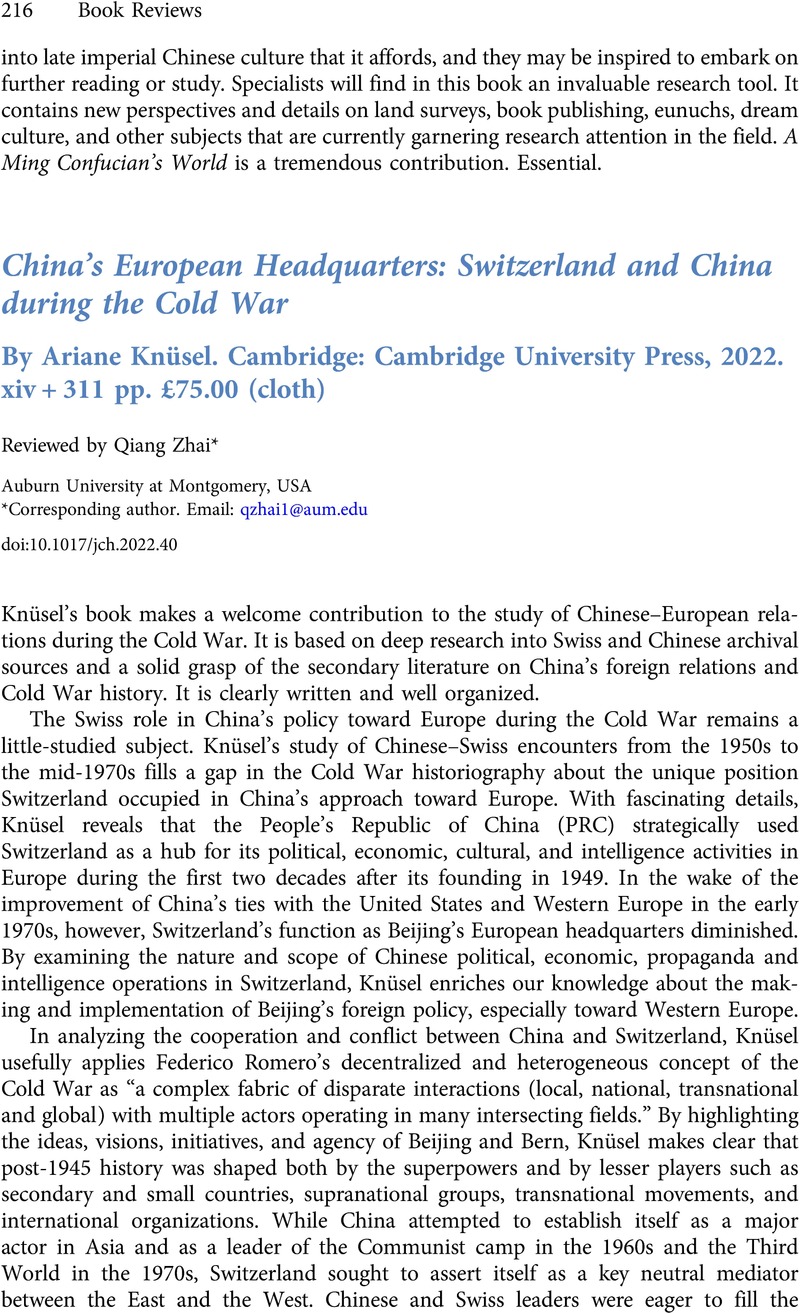No CrossRef data available.
Article contents
China's European Headquarters: Switzerland and China during the Cold War By Ariane Knüsel. Cambridge: Cambridge University Press, 2022. xiv + 311 pp. £75.00 (cloth)
Review products
China's European Headquarters: Switzerland and China during the Cold War By Ariane Knüsel. Cambridge: Cambridge University Press, 2022. xiv + 311 pp. £75.00 (cloth)
Published online by Cambridge University Press: 12 September 2022
Abstract
An abstract is not available for this content so a preview has been provided. Please use the Get access link above for information on how to access this content.

- Type
- Book Review
- Information
- Copyright
- Copyright © The Author(s), 2022. Published by Cambridge University Press



